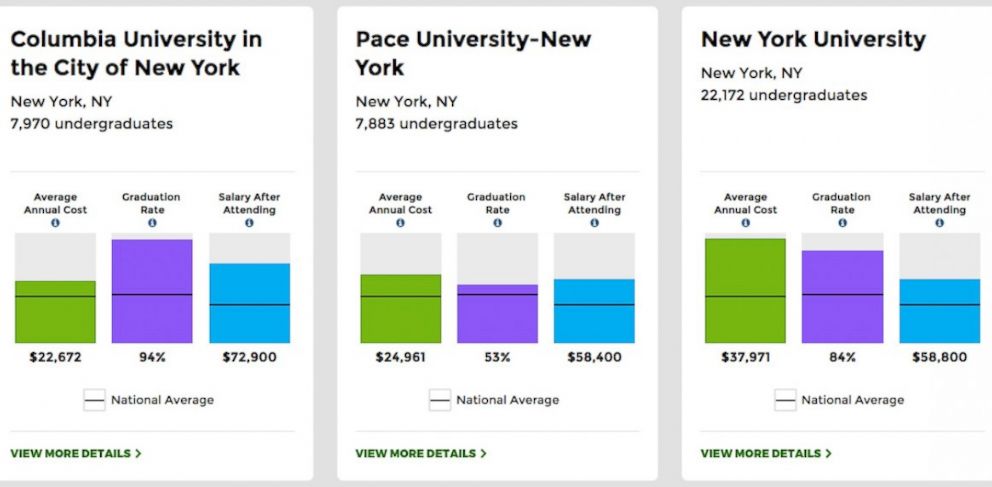What You Should Know About the White House College Scorecard
WH takes a bite out of America's ever-growing student debt crisis.

— -- The White House is hoping to take a bite out of America's ever-growing student debt crisis with a new way to inform prospective students about college costs and job prospects.
The College Scorecard provides data about nearly every post-secondary institution in the U.S., including two-year and four-year colleges and universities. Students can search for the average cost, graduation rate, salary after attending and more.
In his weekly address on Saturday, President Obama introduced the scorecard and said, "Right now, however, many existing college rankings reward schools for spending more money and rejecting more students at a time when America needs our colleges to focus on affordability and supporting all students who enroll."
Here's what you should know about the new scorecard:
1. Compare schools based on your preferences
Students and parents can compare schools based on preferred programs, geographic location and size.

2. Useful rankings
The site also has a number of helpful rankings, such as two-year colleges by state where students earn high salaries after graduation. In California, for example, Los Angeles County College of Nursing and Allied Health has median earnings 10 years after graduation of $85,800. In Ohio, Ohio State University-Marion Campus' median earnings are $42,600.
3. Up-to-date research info
"For the first time, students and their advisors can search for the earnings of students who attended an institution, along with the most up-to-date information about other measures of a college’s quality, including the percentage of students who graduate or repay their loans," wrote Jason Furman, chairman of the White House's Council of Economic Advisers, and Sandra Black, a member of the counsel, in a White House blog post today.

4. Get graduate earnings
For example, the scorecard shows that the average annual cost to attend Georgia Institute of Technology in Atlanta has an average annual net cost of $11,053 for federal financial aid recipients (after aid from the school, state or federal government) with a graduation rate of 81 percent for full-time students. The median earnings of former students who received federal financial aid 10 years after entering the school is $74,000.
Mark Hamrick, Bankrate.com's Washington bureau chief, said, “There’s no such thing as too much information when it comes to making some of the most important financial decisions made by prospective college students, in conjunction with their parents: Where to attend school and how much should they be prepared to pay.”
"Of course there are reasons other than employment to strive for a higher level of education, but it remains a key consideration for many, if not most students," Hamrick said.




